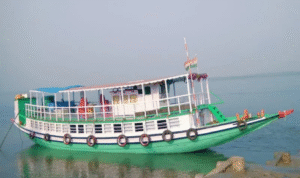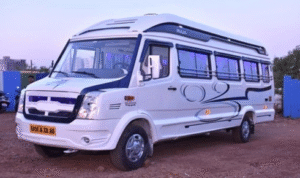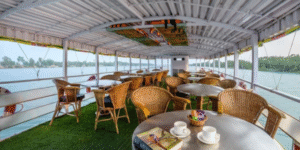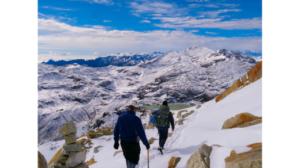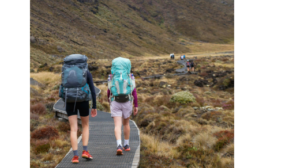1. What is “off the beaten path” in travel?
Answer: “Off the beaten path” is a colloquial term used to describe visiting destinations that are less touristy and more remote or unique. These destinations usually offer an authentic and peaceful experience, far from crowded tourist hotspots.
2. Why should I travel off the beaten path?
Answer: There is a certain authenticity and untouched character to off the beaten path travels, fewer crowds, peaceful scenery, and a chance to explore hidden gems often less commercialized and much cheaper.
3. How can I find destinations off the beaten path?
Answer: Looking for lesser known destinations online or reading travel blogs, asking for recommendations from local people, and exploring guidebooks that focus more on alternative or newly emerging destinations helps find places out of the box of typical tourism.
4. Is it safe to travel off the beaten path?
Answer: Safety depends on your destination, your preparation, and local conditions. You should always know the specific areas with safety issues, keep you updated on travel advisories, and be prepared by keeping your emergency contact information and, if possible, a local guide.
5. How do I avoid tourist crowds on my travels?
Answer: Travel during the off-season, visit lesser-known destinations or visit well-known locations at off-peak times (early mornings or weekdays), and explore areas that are further away from typical tourist hubs.
6. How do I plan an off-the-beaten-path trip?
Answer: Planning involves thorough research, flexibility in your schedule, and a sense of adventure. Consider factors like local customs, transportation options, accommodation availability, and language barriers. Also, prepare for unexpected changes.
7. What are off the beaten path destinations?
Answer: Less touristy destinations with high cultural, historical, or natural experiences. Examples include remote villages, hidden national parks, unexplored islands, lesser-known historical sites, and rural towns.
8. How do I ensure responsible tourism when traveling off the beaten path?
Answer: Respect the local culture, minimize your environmental impact, avoid over-tourism, support local businesses, and be mindful of local customs. Research eco-friendly accommodations and travel with a focus on preserving the integrity of the destination.
9. Do I need to learn the local language when traveling off the beaten path?
Answer: While it’s not always necessary, learning basic phrases in the local language can greatly enhance your experience and interaction with locals. It shows respect and can help you navigate off-the-beaten-path destinations more easily.
10. What are the challenges of traveling off the beaten path?
Answer: Challenges include limited infrastructure, lack of amenities, language barriers, difficulty accessing transportation, and less information available for planning. However, these challenges can lead to more rewarding and unique experiences.
11. How do I travel sustainably in off-the-beaten-path areas?
Answer: Travel sustainably by selecting eco-friendly accommodations, minimizing plastic waste, and supporting local artisans and businesses while reducing carbon footprints. Participate in non-exploitative activities that don’t harm the environment or local culture.
12. Can I find good accommodations off the beaten path?
Answer: Yes, however the accommodations tend to be on the more straightforward and locally managed side. Do search for lodgings, eco-lobbies and boutique hotels whose motto is eco-friendliness and local lifestyle. Advance reservation may be warranted for remote spots.
13. What should I pack for back road travel?
Answer: Pack light and versatile, focusing on the essentials. As for the essentials, comfortable shoes, clothes for varying climates, a good map or GPS, a portable charger, water bottles, and a first aid kit. Don’t forget toiletries, and if necessary, off-grid travel items such as a power bank and/or water purifier.
14. How do you cope with unexpected situations or emergencies?
Answer: Always have a backup plan, including emergency contacts, access to local health services, and travel insurance. Carry a phone with a local SIM card or an international plan, and inform family or friends about your whereabouts.
15. What are the benefits of traveling off the beaten path?
Answer: Benefits include discovering hidden gems, avoiding crowds, having unique cultural experiences, learning from locals, and enjoying nature or historical sites in a more intimate and peaceful setting.
16. What are some examples of off-the-beaten-path destinations?
Answer: Examples include Bhutan, Mongolia, Faroe Islands, Bhutan, Laos, the Azores, or less touristy parts of countries like New Zealand, Indonesia, and Italy. Many emerging destinations also offer unique experiences away from the masses.
17. Am I able to visit off-the-beaten-path locations on a shoestring?
Yes! The truth is, some of the less expensive places to stay, eat, and explore are in locations that most other tourists don’t consider visiting. More affordable local transportation and even accommodation options like hostels or guesthouses will reduce your costs
18. How do I find out if somewhere is really off the beaten path?
Answer: A place is usually considered off the beaten path if it’s not very advertised, has not many tourist crowds, and is also not very known within mainstream travel. Researching what people say in the travel forums, niche blogs, or what locals tell to hear about such a place.
19. How do I blend the off-beat travel with mainstream experiences?
Answer: You can mix both, perhaps by visiting the more scarcely stepped-by areas close to other well-trodden places. For instance, visit a famous town or city one day, but spend your time off in lesser-known nature reserves, villages, or neighborhoods that many visitors conveniently overlook.
20. Is it harder to find food and water off the beaten path?
Answer: Food and water would be limited or different than you are used to in some of the most remote locations. You could find out what local food options you have available for purchase, bring bottled water, and carry a portable water purifier to stay safe and hydrated.
Traveling off the beaten path can offer some of the most memorable and enriching experiences if you plan ahead, stay flexible, and embrace the unexpected!


